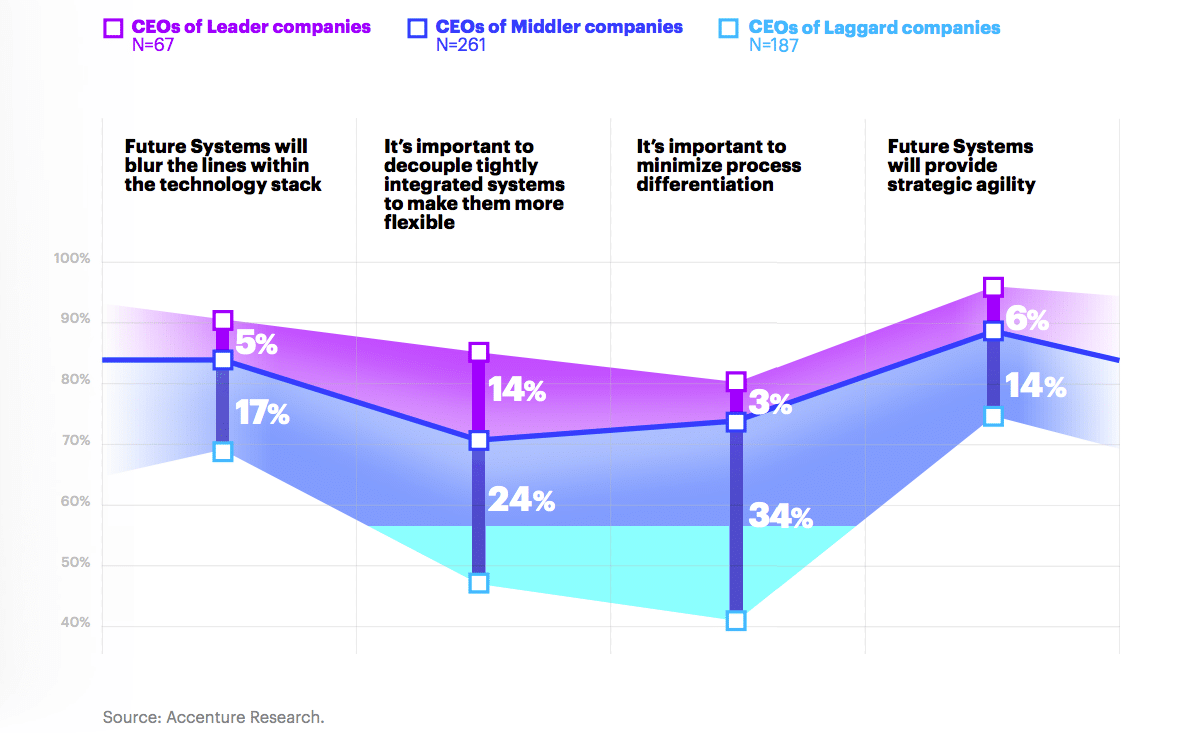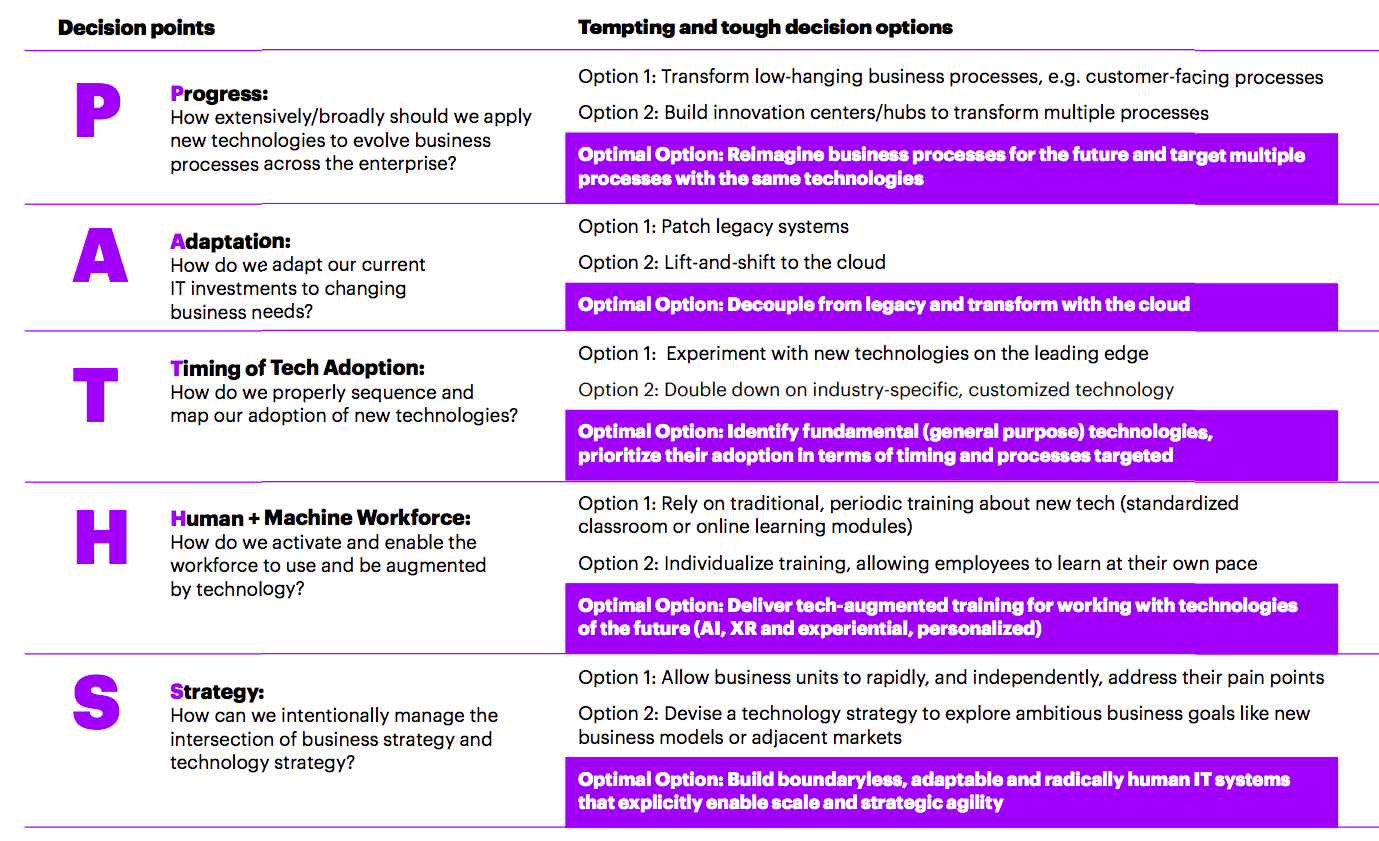New technologies are rolling out at lightning speed, offering businesses the promise of even greater efficiency and insight—but new research from Accenture finds that CEOs and their brands aren’t able to produce the ideas necessary to realize those benefits. Even though a majority of chief execs have expressed strong confidence in the effectiveness of their current IT systems, most are struggling to achieve levels of innovation that drive growth and revenue.
The firm’s new study, Your Legacy or Your Legend? A CEO’s Guide to Getting the Most Out of New Technologies, analyzed the adoption of both mature and emerging technologies—such as artificial intelligence, cloud, blockchain, and extended reality—found that just 10 percent of companies are making optimal technology investment and adoption decisions and realizing the full value of those investments.
Leader CEOs are the strongest advocates of Future Systems:
By adopting new technologies more aggressively and breaking down barriers to effectively scale innovation across their organizations, those leading companies are generating more than twice the rate of revenue growth than those on the lower end of the spectrum.
At the same time, the study found that 80 percent of CEOs believe they have the right technologies in place to innovate at scale, and 70 percent claim to be very knowledgeable of their organization’s investments in innovation.
“Most companies are risking significant future revenue growth because of the gap between the potential and realized value of their technology investments,” said Paul Daugherty, Accenture’s chief technology and innovation officer, in a news release. “Our report offers CEOs a new roadmap to help make strategic investments that narrow this innovation achievement gap and fuel higher growth.”
As part of its study, Accenture identified five key factors—or “PATHS”—that distinguish the top 10 percent of companies from the rest:
Progress
The extent to which companies apply new technology to evolve business processes across the enterprise. One example is the use of cloud and artificial intelligence (AI) to increase the effectiveness of multiple business processes rather than working in silos.
Adaptation
Ensuring that IT systems can adapt and respond to changing market conditions with actions such as decoupling from legacy systems and using cloud services as a catalyst for innovation.
Timing
Creating an appropriate sequence and roadmaps for deploying new technology. This begins with identifying foundational technologies and prioritizing adoption based on their enterprise-wide impact.
Human+machine workforce
Using technologies to augment employees and make work more engaging while simultaneously realizing efficiency gains. This could entail delivering technology-augmented training that is personalized and experiential for working with technologies of the future.
Strategy
Actively aligning business strategy and IT strategy and weaving technology investments together to better seize opportunities.
Five decision points, three options, one optimal choice:
“Companies that are not actively building enterprise-wide systems that are fully optimized for all of the rapidly-maturing technologies will find it difficult to catch up, and will see that reflected negatively in their financial performance,” said James Wilson, managing director of Information Technology and Business Research at Accenture, in the release.
This research is based on a survey of more than 8,300 organizations across 20 industries and 20 countries and was designed to help companies understand and close the innovation achievement gap, which is defined as the difference between potential and realized value from technology investments. The study scored companies on three important dimensions: technology adoption, depth of technology adoption, and organizational and cultural readiness. The report builds on Accenture’s study, “Full Value. Full Stop. How to scale innovation and achieve full value with Future Systems,” released in October 2019, which is also based on the same research.











